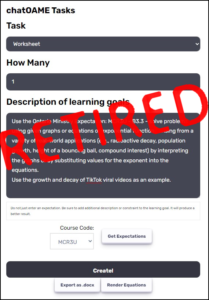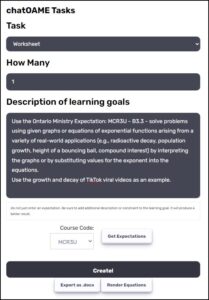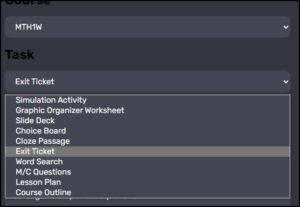So, there’s been a lot of stuff done on the AI-side for chatOAME over Christmas. Well, a lot of stuff was done but much like the difference between distance and displacement, I didn’t get very far 🙂 I did enjoy doing a lot of reading, a lot of testing, a lot of crying and I have made progress and I’ll be outlining some of the changes in a few posts to come. But I wanted to start with what I think was the most helpful change I made.
When a user engages with an AI (or, “prompts” but I hope we move away from that jargon so that we can see these new spaces as only regular conversation spaces as we would if it were a person) the AI returns with their reply based on the criteria that they have been set up with. So chatOAME, when given a conversation starter looks through all the OAME material (The Gazette, The Abacus, the website, podcasts, presentations) as well as selected content from the Ontario Ministry of Ed, the Ontario College of Teachers, some FNMI-related content, and a series of other selected works by educational philosophers and Canadian Math leaders. It pulls out what is relatable and heads out to OpenAI and forms a response to what was first said.
All good.
The teacher then reads over the reply and decides what to do with it. And here’s where I add what I think is the icing on the cake — chatOAME always asks another question that would further the mathematics/educational aspects.
This is good for at least two reasons:
- The goal of chatOAME is to act as the More Knowledgeable Other in Vygotsky’s Zone of Proximal Development for the teacher. The critical friend that can help the teacher grow professionally. By asking a question of the teacher it causes the teacher to reflect on what chatOAME has said and prompts ideas based on that.
- It keeps the conversation going, which keeps the thinking going. If a teacher asks chatOAME a question and they get an answer and they walk away, what happens if chatOAME or the teacher is wrong? Have they seen all aspects of the situation, and what are the unintended consequences? What could happen if they implement the answer? What are other options in this situation? We want teachers to keep thinking, and asking a question of the teacher does that.
Here’s a brief example: the teacher asks for an application problem for MPM2D involving Formula 1 racing:
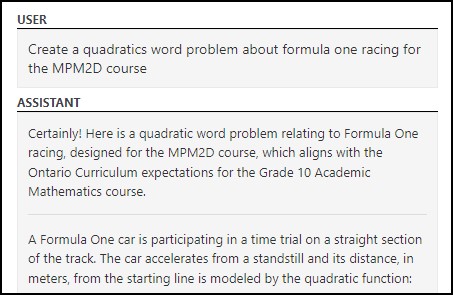
chatOAME goes on and tells the teacher about this problem involving F1 cars and the distance function based on quadratics and such. It ends with:

And chatOAME suggests that maybe we want to push the student further into real-world application of the quadratic. And I love that the teacher bites and asks for ideas (this happens relatively often — chatOAME asks a question and the teacher responds with “ok” or “let’s do that” and they continue).
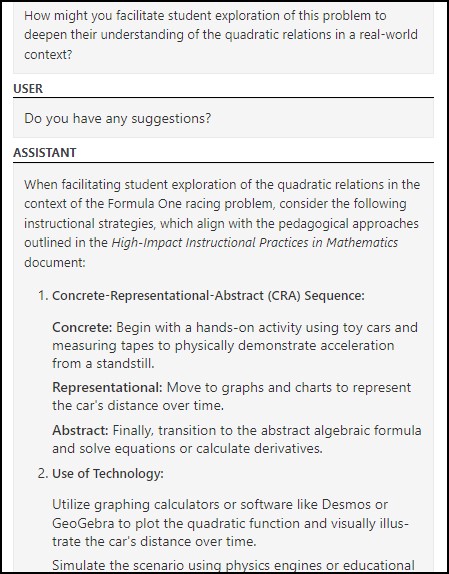
So chatOAME runs into seven ideas on how they could focus on Formula 1 Racing from a variety of different aspects, starting with CRA and technology as shown above, but continues with Collaborative Learning, Differentiated Instruction, Real-World Connections (connecting it to physics, engineering, sports analytics), Problem-Solving and ends with Assessment for Learning.
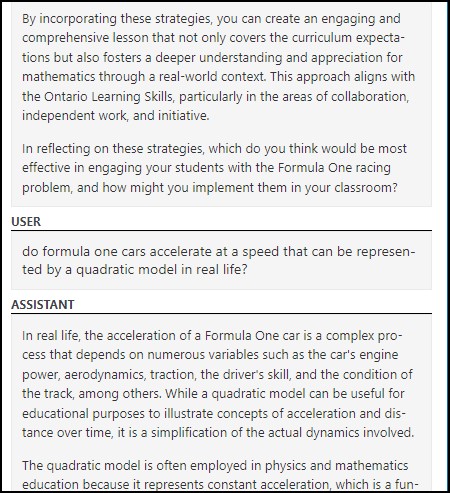
The teacher doesn’t react to those suggestions but goes along a different path, and chatOAME picks up the thread about how and why we simplify the situation to a quadratic, especially for MPM2D. And it again pushes at the teacher about application of what the teacher just read, and the teacher responds.
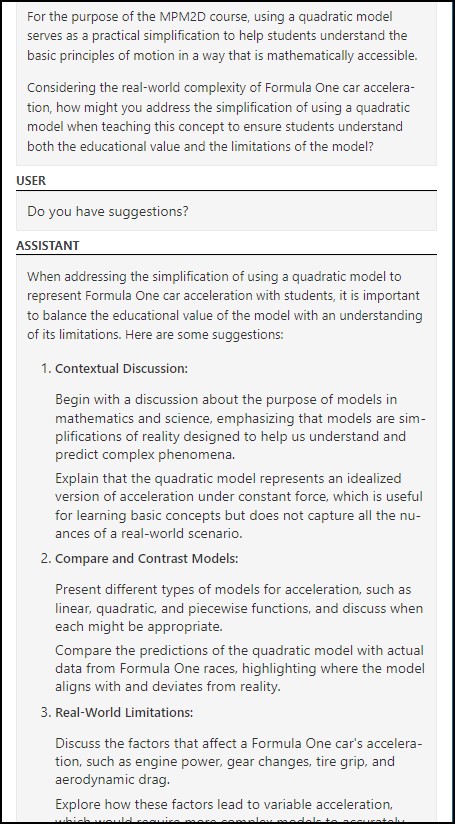
There are seven suggestions in total but the teacher has had enough for now.
One of the things on my to-do list is to improve on the questions being asked; it will take some programming and time, but the better the question, the better the result.
